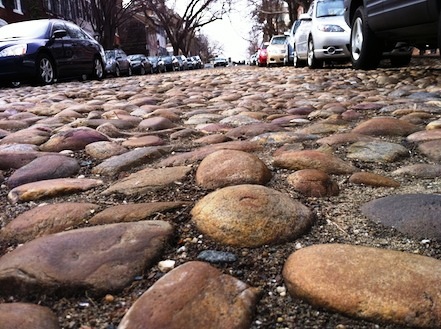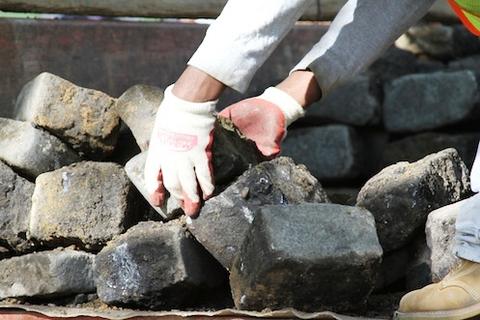OMG, They're not cobblestones!

Exciting times on P Street as the tracks and cobblestones are being repositioned on the finished roadbed. But wait – as it turns out, they’re not cobblestones at all, but setts.
Setts? In the 17th century, river stones used as ballast in ships were dumped in ports upon arrival, and ended up being used to create roads. These river stones, or cobblestones, varied in shapes and sizes and had been smoothed by the flow of water.

The cobblestones were set in sand and had the advantage of being permeable paving - of flexing rather than cracking with extreme weather and movements in the ground. But because of the excessive noise of horse’s hooves and carriage wheels on the irregular stones (and the rough ride!), builders switched to granite setts, sometimes referred to as Belgian block.

A sett is a quarried rock, usually cut into the shape of a brick. Sett paving is believed to have originated centuries ago with the Romans, who used the specially shaped rocks for road paving, and called the quarried stones ‘sanpietrini,' or little stones of St. Peter‘s.

In most historic cities in Europe, South America and Mexico, granite block has been used for centuries. Laying setts is not an art that has been revived in these cities, but one that has been ongoing for hundreds of years.



Georgetown 2012 – Ramiro Batista (above) and supervisor Abel Pereira. Having moved from Portugal 26 years ago, Abel Pereira is from a family of stone paving experts. Abel learned the craft from his grandfather and father, and his brother is currently working on a similar project in Braga, Northern Portugal.
